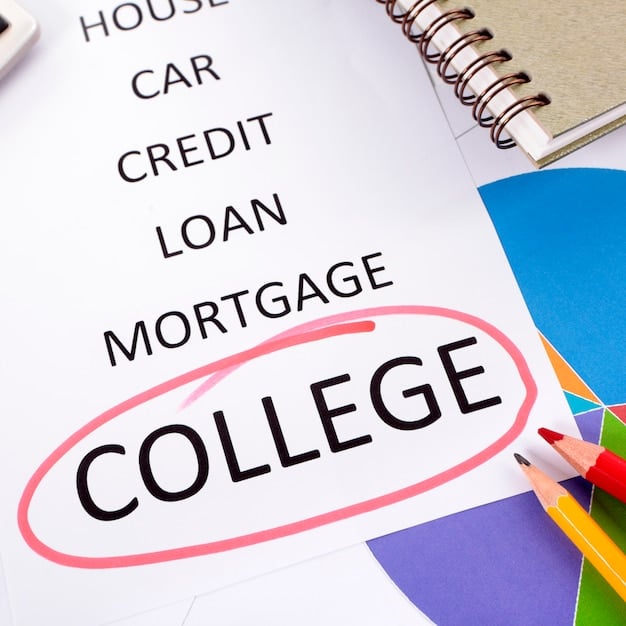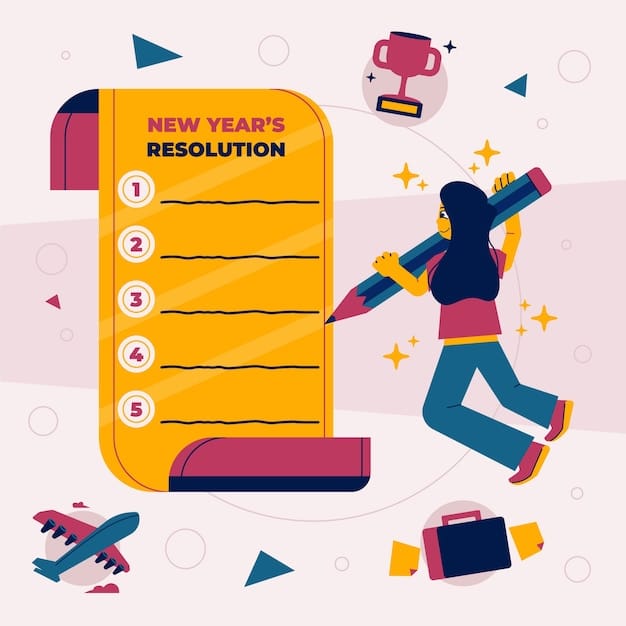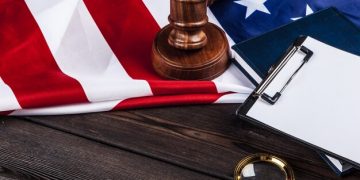Breaking: Student Loan Forgiveness Changes – Who Qualifies?

Breaking: Changes to the Student Loan Forgiveness Program Announced – Who Qualifies and How to Apply identifies key updates to student loan forgiveness, clarifies eligibility, and guides applicants through the application process, offering vital information for borrowers seeking debt relief.
The landscape of student loan forgiveness is constantly evolving. Recent announcements have brought significant changes to existing programs, leaving many borrowers wondering, “Do I qualify?” This article breaks down the key updates to the Breaking: Changes to Student Loan Forgiveness Program Announced – Who Qualifies and How to Apply , clarifying eligibility criteria and providing a step-by-step guide on how to navigate the application process.
Understanding the Latest Student Loan Forgiveness Updates
The student loan forgiveness program has undergone several adjustments recently. These changes impact who is eligible and what steps borrowers need to take to benefit from the new provisions. It’s essential to stay informed to navigate these updates effectively.
Key Changes to the Forgiveness Program
Several significant adjustments have been implemented, each designed to provide broader access to student loan forgiveness and streamline the application process. Knowing these changes is crucial for borrowers seeking debt relief.
- Increased eligibility for income-driven repayment (IDR) plans.
- Simplification of the application process to reduce paperwork and errors.
- Adjustments to the Public Service Loan Forgiveness (PSLF) program requirements.
- Temporary waivers to correct past errors and ensure borrowers receive credit.
These changes reflect an ongoing effort to address the burden of student loan debt and make forgiveness programs more accessible and effective for eligible borrowers.
Who Qualifies for the Updated Forgiveness Programs?
Determining whether you qualify for the updated forgiveness programs involves understanding the specific criteria for each program. Several factors are considered, including income, employment, and loan type. A thorough review of these criteria is essential to identify potential eligibility.

Eligibility depends on the specific program. Here’s a breakdown of common requirements:
Income-Driven Repayment (IDR) Plans
IDR plans allow borrowers to make monthly payments based on their income and family size. After a set period, typically 20-25 years, the remaining balance is forgiven.
- Borrowers must have eligible federal student loans.
- Monthly payments are capped at a percentage of discretionary income.
- Forgiveness occurs after 20-25 years of qualifying payments.
Public Service Loan Forgiveness (PSLF) Program
The PSLF program offers forgiveness to borrowers employed by government or non-profit organizations after 10 years of qualifying payments.
- Borrowers must work full-time for a qualifying employer.
- 120 qualifying monthly payments are required.
- Only federal direct loans are eligible.
Navigating the Application Process: A Step-by-Step Guide
Applying for student loan forgiveness can seem daunting, but breaking down the process into manageable steps can make it more straightforward. Ensuring you have the necessary documentation and understand each stage is crucial for a successful application.
Step 1: Gather Necessary Documents
Before starting the application, gather essential documents such as:
- Proof of income (tax returns, pay stubs).
- Loan statements showing loan types and balances.
- Employment verification (if applying for PSLF).
Having these documents readily available streamlines the application process and reduces potential delays.
Step 2: Choose the Right Forgiveness Program
Select the forgiveness program that best fits your circumstances, considering factors like income, employment, and loan type. Understanding the requirements of each program is crucial.
- Research eligibility criteria for IDR and PSLF.
- Compare the benefits of each program.
- Consult with a financial advisor if needed.
Step 3: Complete and Submit the Application
Fill out the application form carefully, ensuring all information is accurate and complete. Submit the form through the appropriate channels, such as the Department of Education’s website or your loan servicer’s portal.
- Read the instructions thoroughly before completing the form.
- Double-check all information for accuracy.
- Keep a copy of the application for your records.
Common Mistakes to Avoid During Application
Avoiding common mistakes can significantly increase your chances of a successful application. Errors or omissions can lead to delays or denial of forgiveness, so it’s important to be meticulous.
Inaccurate Information
Providing inaccurate or incomplete information is a common mistake that can delay or disqualify your application. Always double-check your details before submitting the form.
Missing Deadlines
Failing to meet deadlines is another frequent pitfall. Keep track of important dates and submit your application well in advance to avoid missing out on potential benefits.
Incorrect Documentation
Submitting the wrong or insufficient documentation can also hinder your application. Ensure you provide all required documents and that they are up-to-date and accurate.

The Impact of Forgiveness on Your Financial Future
Student loan forgiveness can have a profound impact on your financial well-being, freeing up resources for other financial goals and reducing overall stress. Understanding the potential benefits can help you make informed decisions.
- Reduced monthly expenses: With less debt, you’ll have more money each month.
- Improved credit score: Less debt can positively affect your credit.
- Increased financial flexibility: You can save more, invest, or pursue other opportunities.
While there may be tax implications, the overall benefits often outweigh the drawbacks.
Resources and Support for Student Loan Borrowers
Numerous resources are available to help student loan borrowers navigate the complexities of forgiveness programs. Taking advantage of these resources can provide valuable guidance and support throughout the application process.
Department of Education
The Department of Education offers a wealth of information on student loan forgiveness programs, including eligibility criteria, application instructions, and contact information for loan servicers.
Non-Profit Organizations
Several non-profit organizations provide free counseling and assistance to student loan borrowers. These organizations can help you understand your options and develop a repayment strategy.
Financial Advisors
Consulting with a financial advisor can provide personalized guidance tailored to your specific financial situation. Advisors can help you evaluate your options and make informed decisions about student loan forgiveness.
| Key Point | Brief Description |
|---|---|
| 📝 Eligibility Changes | Updated criteria impact who qualifies for forgiveness programs. |
| 💼 PSLF Updates | Public Service Loan Forgiveness adjustments offer broader access. |
| 📑 Application Steps | Gather documents, choose the right program, and apply carefully. |
| ❓Common Mistakes | Avoid errors, missing deadlines, and incorrect documentation. |
Frequently Asked Questions
Recent changes include increased eligibility for income-driven repayment plans, simplification of the application process, adjustments to the Public Service Loan Forgiveness program, and temporary waivers to correct past errors.
Eligibility depends on the specific program. Factors include income, employment, and loan type. Income-driven repayment plans have different requirements than the Public Service Loan Forgiveness program.
Gather necessary documents, choose the right forgiveness program based on your circumstances, and complete and submit the application through the Department of Education’s website or your loan servicer’s portal.
Avoid providing inaccurate information, missing deadlines, and submitting incorrect documentation. Double-check all details before submitting your application to prevent delays or denials.
Resources are available through the Department of Education, non-profit organizations, and financial advisors. These sources can provide valuable guidance and assistance throughout the application process.
Conclusion
Staying informed about the Breaking: Changes to Student Loan Forgiveness Program Announced – Who Qualifies and How to Apply is crucial for borrowers seeking debt relief. By understanding these changes, navigating the application process carefully, and avoiding common mistakes, you can position yourself to benefit from available forgiveness programs and improve your financial future.





